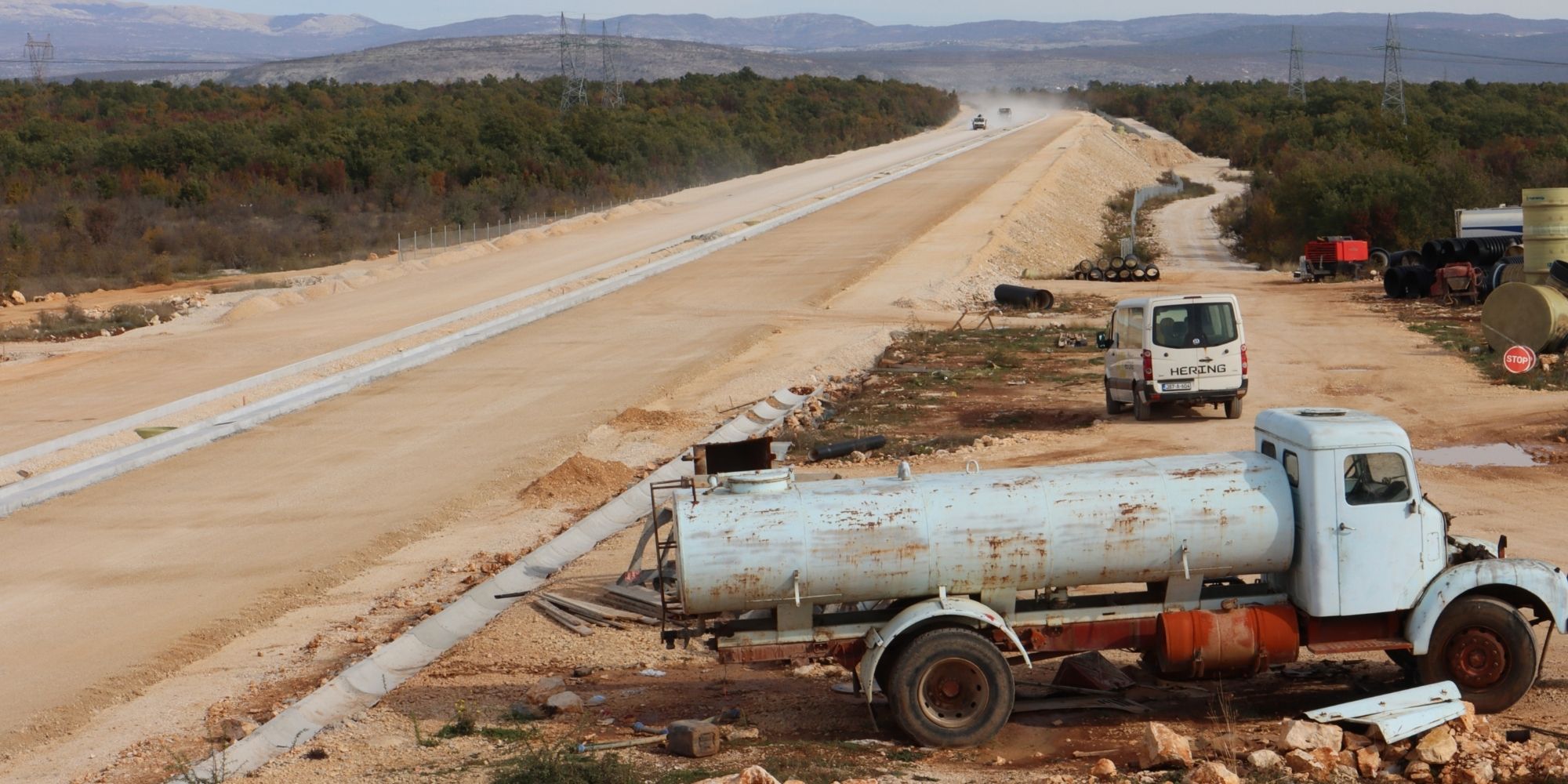Citizens from South Mostar, Bosnia and Herzegovina, will be waiting with their whole hearts for the results of the upcoming EBRD Board meeting on 25 February. The meeting agenda has an item that will affect the lives of people in that area – Corridor Vc in FBH – Part 3 – Operation Change Report. In the week before the decision the EBRD client, JP Autoceste, in collaboration with the bank, has attempted to demonstrate support for the currently selected valley route, while excluding and marginalising local opponents.
Khrystyna Rybachok, CEE Bankwatch, International coordinator | 22 February 2021

JP Autoceste reported on Friday that “representatives of Serb returnees from the City of Mostar expressed full support for the construction of the subsection Mostar South – Kvanj Tunnel”. This is misleading to say the least. What is worse, it deliberately excludes the view of those opposing the valley route and clearly it attempts to marginalise these people as a result. It is a textbook neocolonial technique to divide and rule (Divide et impera – the maxim thought to be conceived by Philip II the Macedon and used successfully by emperors like Julius Caesar and Napoleon.
In this day and age, especially when dealing with emancipated communities who know their rights, this technique undermines the very concepts of meaningful consultation and inclusive stakeholder engagement. But no surprise, it is just another example when the EBRD diggs deeper when it finds itself in a hole (both Nenskra and Amulsat come to mind as cases where project promoters deepen conflicts in communities instead of looking to build consensus).
Connecting or Dividing
The Bankwatch report “Connecting or Dividing?” summarizes some of the factors that might lead to tremendous impacts on the local population and the environment, such as lack of public consultation and transparency in the process of the route selection, failure to address the needs and interests of vulnerable groups, including war returnees, as well as the risks for the biodiversity of the surrounding ecosystems of the rivers Buna and Bunica posed by the route. The report is the result of the fact-finding mission to the South Mostar section of Corridor Vc conducted by Bankwatch team in October 2020 as well as the following desk research of the Environmental and Social Impact Assessment (ESIA) for sub-section Mostar South interchange to tunnel Kvanj released in July 2020.
The same issue “FBH – Part 3 – Operation Change Report” was on the agenda of the last Board meeting on 10 February but the decision on this issue was postponed. This happened not without the help of Bankwatch and local community representatives who consolidated advocacy efforts to persuade the Board to suspend the decision on the South Mostar section loan for Corridor Vc. Bankwatch released a letter to the EBRD Board members following the response from the EBRD Management regarding our report. The request is for the compliance review on the project to run its course.
Accountability and redress at work
Right now the EBRD’s Independent Project Accountability Mechanism (IPAM) is in the middle of a compliance assessment, part of a compliance review, which should analyze the current project compliance with the EBRD policies and standards.
IPAM is supposed to release its Compliance Assessment report in March and commence the review in April. The delay of the loan approval until the IPAM comes up with its recommendation is important. In case IPAM identifies non-compliance, the EBRD should take actions to deliver redress and bring the project into compliance with its environmental, social and transparency standards. In view of the alleged shortcomings of the public consultations to date, this can be an opportunity to take into account the interests of the local affected communities and conduct proper public consultations. It will also allow for a more thorough environmental and social impact assessment and mitigation planning, in order to prevent the negative impact on the critical habitat and vulnerable people.
IPAM has a clear mandate to request a pause in the decision-making, as the EBRD’s Accountability Policy states:
“at any time during the processing of a Request, IPAM believes that serious and irreparable harm will be caused by the Bank’s continued processing of the Project or disbursements in respect of the Project, IPAM may make an interim recommendation for remedial actions by the Bank, including a suspension of further Bank processing of the Project or the suspension of disbursements. ”
IPAM should warn the Board of the serious and irreparable harm that can be caused on the local communities, if the EBRD and its client will not take immediate actions to include all stakeholders in a transparent and meaningful consultation.
It is of crucial importance to restore the trust of the local community in the EU decision-making mechanisms and the safeguards of the EBRD, as the international community is contributing to the implementation of strategic projects, like Corridor Vc, and the development of post-war Bosnia and Herzegovina. European and multilateral financing should not allow the destruction of what was rebuilt with tremendous efforts of the international community and the local people’s own resources. An alternative does exist and EBRD decision-makers need to explore its viability as a way to protect local communities and nature from further harm.
Never miss an update
We expose the risks of international public finance and bring critical updates from the ground – straight to your inbox.
Institution: EBRD
Theme: VC Corridor
Project: Corridor Vc motorway, Bosnia and Herzegovina
Tags: Corridor vc motorway
